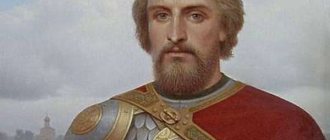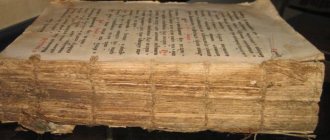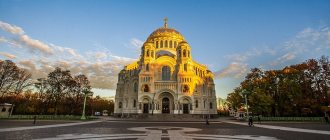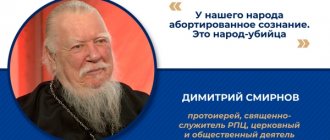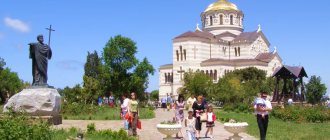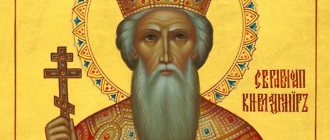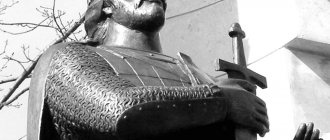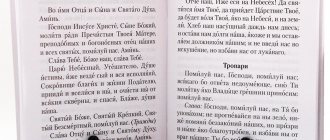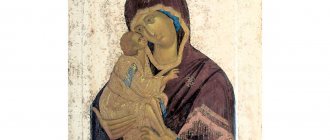short biography
Prince Dmitry Donskoy, portrait from the "Tsar's Titular Book" of the 17th century
Dmitry Ivanovich Donskoy - ruler of the Moscow principality from 1359 to 1389, Grand Duke of Vladimir from 1363, son of Ivan II the Red and grandson of Ivan I Kalita. He is one of the most famous rulers of Muscovite Rus' during the Mongol-Tatar yoke due to his victory over the Golden Horde temnik Mamai in the Battle of Kulikovo in 1380 - the first major battle of Russian troops with the Horde, the success of which became an important step towards strengthening the Moscow principality and future overthrow Golden Horde yoke. After the invasion of Tokhtamysh in 1382 and his devastation of the capital, Donskoy had to resume paying tribute to the Horde, but Moscow had already become not only the center of unification for numerous appanage principalities, but also the strongest economic player in the region (large-scale construction of temples and monasteries was carried out, coinage was resumed after a 250-year break).
In the confrontation with Lithuania for influence on Tver, Prince Dmitry withstood the siege of Moscow twice and was even able to make peace for some time with the Lithuanian Prince Olgerd on the condition of the latter’s non-interference in Tver affairs. However, soon control over Tver was lost - in 1382-1383, Tokhtamysh received tribute from Donskoy for the two years that had passed since the defeat of Mamai and secured the right to the reign of Vladimir for the Moscow Rurik dynasty, while simultaneously giving the Tver principality independence from Moscow. Since 1386, the Principality of Lithuania extended power to Smolensk.
Battle of Kulikovo
Dmitry received his nickname for his victory in the Battle of Kulikovo, which took place not far from the Don - at the mouth of the Nepryadva River.
The battle took place in 1380 on September 8th. The Horde troops were led by Temnik Mamai. He was supported by the Lithuanian prince Jagiello.
Before the battle, Dmitry Donskoy received the blessing of Abbot Sergius of Radonezh.
Before the battle there was a duel between two heroes - Peresvet and Chelubey. They both died.
Peresvet is a warrior monk, a monk of the Trinity-Sergius Monastery. For his participation in the Battle of Kulikovo he was later canonized.
Donskoy used a new method of conducting action: he used an ambush regiment, headed by governor Dmitry Bobrok-Volynsky and Prince Vladimir Serpukhovsky. Mamai fled to Kafa (Feodosia), where he was killed.
The battle was of great importance for Rus', although it did not end the yoke.
Board of Dmitry Donskoy
The struggle of the regents for the great reign for Dmitry
The death of Ivan II the Red in 1359 left the Moscow Rurik dynasty without an adult contender for the great reign of Vladimir - his eldest son Dmitry was only 9 years old. Metropolitan Alexei, who had good relations with the Horde (he healed Khansha Taidula of an eye disease), became the head of the regency council under the young prince and the de facto ruler. Prince Dmitry Konstantinovich of Suzdal-Nizhny Novgorod managed to get a label for Vladimir from the new khan in 1360, but two years later the Moscow party was able to come to an agreement with Temnik Mamai, who had usurped power in the Golden Horde, about restoring Dmitry Ivanovich to the reign of Vladimir. Taking advantage of the confusion during the “Great Zamyatnya” in the Horde, the Suzdal prince was able to again obtain a label for Vladimir and even entered the city, but was soon expelled from there by the Muscovites.
General scheme of the reign of Prince Dmitry Donskoy
Metropolitan Alexei resolved the issue with the claims of the Suzdal-Nizhny Novgorod prince by recognizing his rights to Nizhny Novgorod, in exchange for renouncing claims to Vladimir, and sealed the alliance with a marriage between the daughter of Dmitry Konstantinovich and Prince Dmitry Ivanovich. For 14-year-old Dmitry Donskoy, marriage was not only a formal confirmation of the union, but also gave him the status of an adult, although in fact the principality was ruled by the boyars led by Alexei.
The large-scale construction that took place in the first years of the prince's reign (the White Stone Moscow Kremlin, churches and monasteries) were obviously the initiatives of the regency council, which understood the importance of strengthening the defense of Moscow in the face of increasing pressure from the Principality of Lithuania.
The invasion of Edigei is the culmination of relations with the Horde
The indecision of Vasily I and Vytautas can be explained not only by family feelings. At that time, the Lithuanian prince was more concerned about relations with the German crusaders, and the Moscow sovereign watched the events in Sarai with caution. Edigei tried to restore Horde control over the Russian lands and supported the contender for the Nizhny Novgorod throne, Prince Semyon Dmitrievich. After the defeat of Vitovt at Vorskla, he even invaded Russian lands with Tatar troops and was able to capture Nizhny Novgorod. However, the approach of Moscow troops soon forced him to retreat back to the steppe. Pursuing the Tatars, Vasily I's brother, Yuri Dmitrievich, made a raid into the Middle Volga region, taking Bulgar, Kazan and Kremenchug.
As a result, the rebellious Semyon Dmitrievich himself surrendered to the Moscow authorities, and the Moscow sovereign concluded several agreements with the Tatars, apparently agreeing to conduct joint military operations against Vytautas. In November 1408, Edigei informed Vasily I that he was going on a campaign against the Lithuanians, but unexpectedly moved his forces to Moscow. These actions of the Tatar temnik took the Grand Duke by surprise. Not daring to give Edigei battle, he retired to Kolomna. The Tatars divided, took many cities subordinate to the Grand Duke, and on December 1 began the siege of Moscow.
Invasion of Edigei. Miniature from the Front Chronicle. (en.wikipedia.org)
Edigei, like Mamai several decades earlier, sought to regain control over Russian lands, primarily in order to continue the fight against Tokhtamysh and the Horde separatists. He tried to involve the Tver prince Ivan Mikhailovich in the fight against Vasily, but he refused to send troops - shortly before the campaign, the Moscow ruler was able to negotiate an alliance with the Tver residents, thereby securing the rear of his state.
The unstable situation in Sarai forced Edigei to retreat. He demanded that Muscovites pay tribute in the amount of 3 thousand rubles - the Tatar temnik made major concessions, because in fact, for 13 years, Vasily “owed” about 91 thousand to the Horde treasury). On the way back, the Tatars burned the villages that belonged to Svidrigailo, which was the reason for the Lithuanian nobleman’s departure from the Moscow principality. One of the results of Edigei’s invasion was the separation of the Nizhny Novgorod lands from Moscow.
V. P. Vereshchagin. Vasily I and his uncle, Vladimir Andreevich, after the retreat of Edigei. (www.liveinternet.ru)
In 1412, Vasily I went to the Horde to Khan Jalal-ad-Din, son of Tokhtamysh, who was able to occupy Sarai with the help of Vytautas. In fact, this meant the end of the Troubles in the Horde. The Moscow prince restored tributary relations with the Tatars in exchange for solving the Nizhny Novgorod problem - the integrity of the state turned out to be more important than dependence. As a result of a long and difficult struggle with the Nizhny Novgorod princes, in 1423 these lands again became part of the grand ducal possessions.
Briefly about the essence and directions of foreign policy
The first serious foreign policy conflict occurred when Donskoy was 18 years old - the Principality of Lithuania intervened in the struggle between the Tver princes. Twice (in 1368 and 1370) the Moscow army invaded Tver to support its candidate, and twice after that Olgerd unsuccessfully besieged Moscow. Despite the existing conflicts, Lithuania and the Horde tried to jointly oppose Moscow - in 1370, the Tver prince Mikhail Alexandrovich, supported by the Lithuanians, was given a label by the Horde temnik Mamai for the great reign of Vladimir, but Dmitry gathered Moscow troops and openly did not obey the demands of the Khan's ambassador to transfer control. The following year, an agreement was concluded with Mamai to reduce the amount of tribute. Donskoy also tried to bring Ryazan under his control and expelled Prince Oleg Ivanovich from it, but soon the exiled ruler of Ryazan returned and is mentioned among those who concluded the Lubut Agreement with Lithuania.
Territories of the Moscow Principality by the end of the reign of Dmitry Donskoy More about foreign policy
Portrait of Olgerd. Engraving from “Description of European Sarmatia”, 1578.
Olgerd's third campaign against Moscow in 1372 failed, and among the conditions of the Peace of Lubut it was concluded on the terms of non-interference of the Lithuanian prince in Moscow-Tver relations. Meanwhile, the Horde perfectly understood the prospects for the unification of the Russian lands, and in 1373 the Ryazan principality was attacked by Mamai, after which the chronicles again mention the “reconciliation” between Moscow and Ryazan. The following year, Mamai again tried to influence Dmitry through Mikhail Tverskoy, giving him a label for the second time, which caused a campaign of the united forces of North-Eastern Rus', as well as the Smolensk people, to Tver, as a result of which Mikhail recognized himself as Dmitry’s younger brother and pledged to participate in all anti- -Horde actions in Moscow and renounced claims to Kashin.
Since 1374, Donskoy, in response to Mamai’s demand for an increase in tribute, generally refused to pay “exit” to the Horde. On his initiative, a princely congress was organized in Pereyaslavl-Zalessky, the purpose of which was to consolidate an anti-Horde coalition around Moscow. In addition to the Russian princes, the congress was attended by Lithuanian princes who supported the idea of confrontation with the Horde. Soon, the Khan's ambassadors to Nizhny Novgorod were captured by order of Dmitry of Suzdal, and a year later the united army of Nizhny Novgorod and Muscovites made a successful campaign against the Horde's ally - Volga Bulgaria. The retaliatory campaign of the Horde in 1377 was also successful: suddenly attacking the Russian camp near the Piana River, they completely defeated the Nizhny Novgorod regiments and after that plundered the unprotected Nizhny Novgorod principality.
Khan Mamai Hood. V. Matorin, 2004
General scheme of the battle on the river. Vozha in 1378
In 1378, the first major victory over the Horde took place: an army of 5 tumens (about 50 thousand) sent by the khan was defeated on the Vozha River by the united troops of Donskoy and the Serpukhov prince Vladimir the Brave. Successful reconnaissance allowed Dmitry to block the ford along which the Tatars were planning to cross and take a convenient combat position on the hill. Four Horde princes and the leader of the army, Temnik Begich, fell in the battle. The battle demonstrated the vulnerability of the Tatar cavalry, which could not withstand staunch defense and decisive retaliatory strikes, and most importantly, it greatly weakened Mamai, forcing him to attract mercenaries to replenish the lost troops.
In 1379, Mamai again devastated the Ryazan principality. A large-scale campaign against Donskoy and his coalition was planned for the next year; Mamai was to be joined by the Ryazan prince Oleg and the new Lithuanian ruler Jagiello. The formal reason for the upcoming clash was Dmitry’s refusal to Mamai’s demand to increase the tribute paid to the amount in which it was paid under Dzhanibek. Wanting to prevent the unification of the Horde and Lithuanians, Donskoy moved towards Mamai with an accelerated march and on September 8, 1380, successfully defeated Mamai’s troops. Large losses in the Russian army (according to various sources, from half to a third of all regiments) did not allow them to pursue the fleeing enemy. Convoys with wounded and equipment returning from the battlefield were plundered by the Ryazan and Lithuanians.
Directions of movement of Moscow, Lithuanian and Horde troops related to the Battle of Kulikovo 1380
Map showing the direction of movement of Tokhtamysh's troops in 1382
The Horde temnik Mamai, who fled to the Crimea, was soon defeated by the legitimate Horde khan and representative of the Chingizids, Khan Tokhtamysh. The new khan sent envoys to Moscow with gratitude for their help in overthrowing Mamai and demanded the resumption of payment of tribute, which was refused. In 1382, Tokhtamysh made a ruinous campaign against Moscow and was able to capture the city by cunning. Donskoy left the capital shortly before the assault, allegedly going to Kostroma to gather troops. Having plundered Moscow, the surrounding lands and several cities, Tokhtamysh received news of the defeat of one of his troops from Vladimir the Brave near Volokolamsk and gave the order to the troops to return.
Sensing the weakening of the Muscovites, the Tver prince Mikhail again went to the horde and declared rights to the Vladimir principality, but Dmitry was able to conclude an agreement with Tokhtamysh: the Horde were paid tribute for the two years that had passed since the defeat of Mamai, and in return the Vladimir principality was assigned to the Moscow Rurikovichs. Tokhtamysh, however, understood the danger of Moscow’s excessive strengthening, so he gave the Tver prince the right to independently collect taxes and Tver’s independence from Moscow was restored.
In Lithuania, supporters of an anti-Horde alliance with Moscow temporarily came to power, led by Prince Keistut, who recognized the influence of Moscow in Smolensk and in the supreme principalities, but already in 1382, under direct military pressure from the Teutonic Order and diplomatic support from the Horde, Jagiello returned to power. In 1384, negotiations were held with Jagiello and a preliminary agreement was even concluded on the marriage of the Lithuanian prince with the daughter of Donskoy and the transition of Lithuania to Orthodoxy, but already in 1385 Lithuania concluded a union with Poland, and Jagiello married the Polish heiress Jadwiga. Soon Lithuanian power extended to Smolensk, whose prince tried to return the lands previously taken from him and was defeated.
In 1385, Oleg Ryazansky, taking advantage of the weakening of Moscow after the invasion of Tokhtamysh, captured Kolomna and defeated the Moscow army led by Vladimir Andreevich the Brave that opposed him in the battle of Perevitsky. Through the mediation of Sergius of Radonezh, an “eternal peace” was concluded with Dmitry Donskoy and two years later Oleg married his son Fyodor to Dmitry’s daughter Sophia.
In 1386, after the attacks of the Ushkuiniks on the lands along the Volga, Dmitry Donskoy led troops from 29 volosts at a distance of 15 versts to Novgorod and received from him an indemnity of 8 thousand rubles. in two terms (the amount exactly corresponded to the debt recognized by Dmitry for the Horde exit for 1381-82; obviously, Dmitry wanted to make up for the amount collected in 1383-1384 from the war-ravaged territory of the great reign and the amount that went to the Horde).
In the summer of 1387, Metropolitan Cyprian came to Lithuania, who convinced Keistut’s son Vytautas to lead the anti-Polish coalition and betrothed Vytautas’ daughter Sophia to the Moscow prince Vasily (the marriage was concluded after Donskoy’s death).
Moscow and Horde
The Golden Horde, to which almost all Russian lands paid tribute in the 14th century, was very concerned that the Moscow Principality was so clearly striving for independence. The Horde was then ruled by Khan Mamai. The fight went on with varying degrees of success. In fact, Moscow stopped paying tribute to the Horde back in 1373. In 1374-76, Mamai managed to win several victories over the Russian squads, but Dmitry responded in kind. In 1378, Mamai sent his rather strong army to Moscow (about 50 thousand people), which managed to do a lot of trouble along the way - for example, taking Nizhny Novgorod and causing real destruction there.
However, the Russians met the enemy near the Vozha River not far from Ryazan and won. The Litvins also joined the Moscow-Suzdal army - by that time, Dmitry’s eternal enemy Olgerd had died, and his son Andrei had ascended the throne. He went over to Moscow’s side because Dmitry promised him support in Lithuanian affairs.
In 1378, another significant event happened for Dmitry - his guardian died. The prince refused Cyprian, who was offered to him as a confessor, and chose his own mentor. True, for this he had to force his closest friend Mikhail-Mitya to become a monk. Cyprian considered the fact that he was not allowed into Moscow, and even robbed by the princely people, a humiliation, and excommunicated Dmitry from the church.
Brief description of domestic policy
Closeness with Metropolitan Alexei and the need to strengthen the defense capability of the controlled territories determined the two main directions of the prince’s internal policy - the construction of defensive structures, temples, monasteries and interaction with the church. After the death of Alexei, Donskoy, understanding the power of church support in resolving current foreign policy issues, more than once intervened in the election of a new metropolitan, periodically sending away candidates who had fallen out of favor. Nevertheless, large-scale church construction ensured the development of the Moscow tradition of chronicle writing. The creation of works related to the victory of Russian weapons on the Kulikovo Field (which later became the basis for “The Tale of the Massacre of Mamaev” and “Zadonshchina”) dates back to the reign of Dmitry.
Moscow Kremlin under Ivan Kalita, 1921, art. A. Vasnetsov More about domestic policy
Personal money of Dmitry Donskoy
Separately, it is worth noting the resumption of coinage - the end of the 250-year-old coinless period, when in Rus' the princes did not mint money, using mainly natural exchange or “hryvnia” (bars of silver). Increasing economic activity, large-scale construction projects, and the influx of money from the Horde - all this made it possible to restore one of the most important functions of the state.
Death and will
In 1388, shortly before the death of Dmitry Donskoy, there was a conflict with Vladimir Andreevich the Brave regarding the succession to the Moscow throne by Dmitry's son Vasily. First, Dmitry arrested the Serpukhov boyars, then, after promising additional possessions to Vladimir, the latter recognized Dmitry as his father and the Dmitrievichs as older brothers. Dmitry managed to make peace with Vladimir two months before his death.
In his will[1]Spiritual letter (second) of Grand Duke Dmitry Ivanovich, Dmitry Donskoy was the first of the Moscow princes to mention the great reign (Vladimir, Pereyaslavl-Zalessky, Kostroma), Beloozero, Dmitrov, Uglich, Galich, but some of them are mentioned as previously belonging to his family (“the purchases of my grandfather”). No less new was Dimitri's order that the petty princes of the Moscow land should live in Moscow at the court of the Grand Duke, and not on their estates.
The Grand Duke of Moscow lived a rich, but not very long life - at the age of 38, on May 19, 1389, Dmitry Donskoy died. The last episode of the prince’s life is given in the “Tale of the Life” of the prince:
“And then he got sick and suffered greatly. But afterwards he felt better, and the Grand Duchess rejoiced with great joy, and his sons, and the nobles of his kingdom. And again he fell into an even greater illness, and groans entered his heart, so that his insides were torn, and his soul was already approaching death” (25, 215; translation by M. A. Salmina).
Considering his heavy build, N. S. Borisov suggests the cause of death was a heart attack (that for the same reason the prince could lose consciousness during the Battle of Kulikovo without receiving wounds) [2] Borisov N. S. Dmitry Donskoy. - M.: Young Guard, 2014. - 512 p. — (Life of remarkable people. Series of biographies: Issue 1674 (1474))..
Cathedral of the Archangel. Perspective of the ends of the tombstones Vel. Princes Ivan II the Red, Dmitry Donskoy and Prince. Dmitry Uglitsky. Ph. K.A. Fisher. 1905
Death of Vasily I - succession crisis
In February 1425, 53-year-old Vasily I died. Of the three sons the prince had in marriage with Sofia Vitovtovna, only Vasily Vasilyevich, who at that time was only 9 years old, lived to see his father’s death.
The principality could have passed without any problems, as in the time of the first Moscow princes, to Vasily I’s brother, Yuri Dmitrievich, but the situation was complicated by the will of Dmitry Donskoy - the first document challenging the ladder system of inheritance. The deceased himself did not have time to determine the future fate of his estate. As a result, the country slipped into a real civil war that lasted at least a quarter of a century. The winner was the blinded son of Vasily I.
Results and results of the board
- Lost control over the Tver Principality
- The Principality of Smolensk came under the control of Lithuania
- Successful campaign against Volga Bulgaria - indemnity received, Russian customs officers imprisoned
- Victories were won over the Golden Horde in the battles of Vozha in 1378 and Kulikovo Field in 1380.
- Khan Tokhtamysh made a successful raid on Moscow in 1382 and plundered not only the capital of the principality, but also other cities, Donskoy paid tribute for the previous 2 years
- An indemnity in the amount of 8,000 rubles was received from Novgorod for a series of attacks by ushkuiniks.
- The image of the Moscow principality is being formed as the center of the unification of the northeastern Russian lands
- The Grand Duchy of Vladimir was assigned to the Moscow Rurik dynasty
- The struggle with the Golden Horde for influence on the Ryazan principality continues
- Construction of the White Stone Moscow Kremlin
- Construction of temples and monasteries
- After a long break, coinage resumed in the Russian principalities.
- Literary works appear, the Moscow chronicle tradition develops
- An agreement on a future marriage was concluded between the daughter of the Lithuanian prince Vitovt and the son of Donskoy Vasily.
Tokhtamysh's attack
Khan Tokhtamysh was no better than other rulers of the Horde. He, too, was haunted by the strengthening of Moscow, and especially by the fact that after the Battle of Kulikovo several Russian principalities united - the very strong Vladimir principality joined Moscow.
Taking advantage of Dmitry's absence, Tokhtamysh raided Moscow. He took the city not so much by force as by cunning, but this led to dire consequences. Despite the fact that one of the Horde detachments was defeated. Dmitry's former allies quickly separated. Mikhail, the ruler of Tver, again began to lay claim to the Principality of Vladimir. There was a serious quarrel between Dmitry and Metropolitan Cyprian, after which the Moscow prince was again forced to return to the idea of creating his own metropolis.
Important! Moscow was again forced to pay tribute, but Dmitry negotiated some favorable conditions for Rus'. In particular, the independence of the Vladimir principality from the Tver principality and its subordination to the Moscow principality was legalized.
Family and personal life
Dmitry's only wife was Evdokia, daughter of the Grand Duke of Suzdal-Nizhny Novgorod Dmitry Konstantinovich. At the age of 13, she was married to the 15-year-old Grand Duke of Moscow Dmitry, which sealed the alliance between Moscow and the Suzdal-Nizhny Novgorod principality. Dmitry and Evdokia had twelve children. Since 1389, after the death of her husband, Evdokia Dmitrievna actually stood at the head of the Moscow principality, being the guardian of succession to the throne among her sons. She was declared the guarantor of her husband's will. According to the Spiritual Charter of Dmitry Donskoy, she received more than 30 volosts and settlements and over 20 large villages, while 15 volosts and settlements and 14 villages were transferred to the full ownership of the dowager princess.
Princess Evdokia Sculptural reconstruction based on the skull, work by Sergei Nikitin
Children
Daniil Dmitrievich (1370 - September 15, 1379). Vasily I Dmitrievich (December 30, 1371 - February 27, 1425). Sofya Dmitrievna (died in 1427), in 1387 she married Fedor, the son of Oleg of Ryazan. Yuri Dmitrievich Zvenigorodsky (November 26, 1374 - June 5, 1434). Maria Dmitrievna (died May 15, 1399) - married Prince Lugveny (Semyon) of Mstislav, son of the Grand Duke of Lithuania Olgerd. Anastasia Dmitrievna - married Ivan Vsevolodovich, Prince of Kholmsky Simeon Dmitrievich (died September 11, 1379). Andrei Dmitrievich Mozhaisky (August 14, 1382 - July 9, 1432). Pyotr Dmitrievich Dmitrovsky (July 29, 1385 - August 10, 1428). Anna Dmitrievna (born January 8, 1387) - married Prince Yuri Patrikeevich Ivan Dmitrievich (1380 - July 29, 1393). In monasticism Joasaph. Konstantin Dmitrievich (May 14, 1389 - 1433) - Prince Uglitsky
Muscovite Rus' after Dmitry Donskoy
After the death of Dmitry Donskoy in 1389, his son Vasily received from the Horde the right to the Vladimir table, transferred through the Khan's ambassador Chess. Under Vasily I, feudal land ownership continued to grow and further centralization of power took place. The new Moscow prince annexed the Nizhny Novgorod and Murom principalities, and in 1397-1398 - Bezhetsky Verkh, Vologda, Ustyug and Komi lands. He made two unsuccessful attempts to take the Dvina land from Novgorod by force. Thanks to prudent policies, during the 36 years of the reign of Vasily I, the Moscow principality did not experience any internal upheavals. During this period of time, Moscow was attacked only once, in 1408, by the forces of the Horde. Edigei was never able to take the city, but Vasily had to resume paying tribute after a 12-year break.
Grand Duke Vasily I Dmitrievich Portrait from the Tsar's titular book (1672)
Image in culture and memory of generations
The personality of Dmitry Donskoy left a significant mark on the history of modern Russia and Ukraine. Over the past centuries, paintings, films and monuments dedicated to the prince have been created. The name of Dmitry Donskoy has become a symbol of Russian military glory over several centuries. During the Great Patriotic War, a tank column was named in honor of Dmitry Donskoy, created on the initiative of the Moscow Patriarchate with donations from believers and transferred in 1944 to the tank forces of the USSR. In 2002, the Order “For Service to the Fatherland” was established in memory of the Holy Grand Duke Dmitry Donskoy and the Venerable Abbot Sergius of Radonezh. In the Russian Navy, sailing battleships built in 1771 and 1809, a screw frigate, an ocean-going armored cruiser and a nuclear submarine were named after the prince at different times.
Battle of Kulikovo (Dmitry Donskoy on the Kulikovo Field) Art. A. Yvon
He is the hero of a number of works of art: the poem “Dmitry Donskoy” (1977) by Valentin Sorokin, “The Wind of Time” (1987), “Renunciation” (1989) and “Holy Rus'” (1997) by Dmitry Balashov (from the series “The Sovereigns of Moscow”), “Redemption” by V. Lebedev (1991), “Care me” by B. Dedyukhin (1993), “Battle of Kulikovo. Kulikovo Field” by V. Vozovikov (2003), “Bokh and Shelma” by B. Akunin, etc.
Images
Interesting Facts
- The appearance of Dmitry Donskoy and his family members can only be judged by icons - portraits were not painted in Rus' at that time. In character, the chronicles testify, he resembled his father - he was kind and merciful.
- There is evidence that the Russian army was blessed by Sergius of Radonezh for the Battle of Kulikovo. However, some historians believe that this happened before the Battle of Vozha.
- The exact location of the Battle of Kulikovo has not yet been established.
- His widow Evdokia behaved unusually. According to the custom of that time, she had to go to a monastery immediately after the death of her husband. Why she didn’t do this and went against the will of those close to her remained a mystery. But she remained with her son and very sensibly helped him manage state affairs. At times, the princess even headed the state when Vasily was away on military business. Only after the fate of all the children was decided and their personal lives were arranged, she took monastic vows as a nun under the name Euphrosyne. In Moscow, she is the most revered saint, the patroness of the city, and there is even a special prayer dedicated to this amazing woman.
For more interesting facts about this person, watch the video below.
Previous
BiographiesMozart biography?, the most popular musical works, interesting facts from life, what he played, how many symphonies
Next
Biographies Saltykov-Shchedrin biography?, briefly the most important thing, role in the history of Russian literature, interesting facts, chronological table of the writer’s life and work
